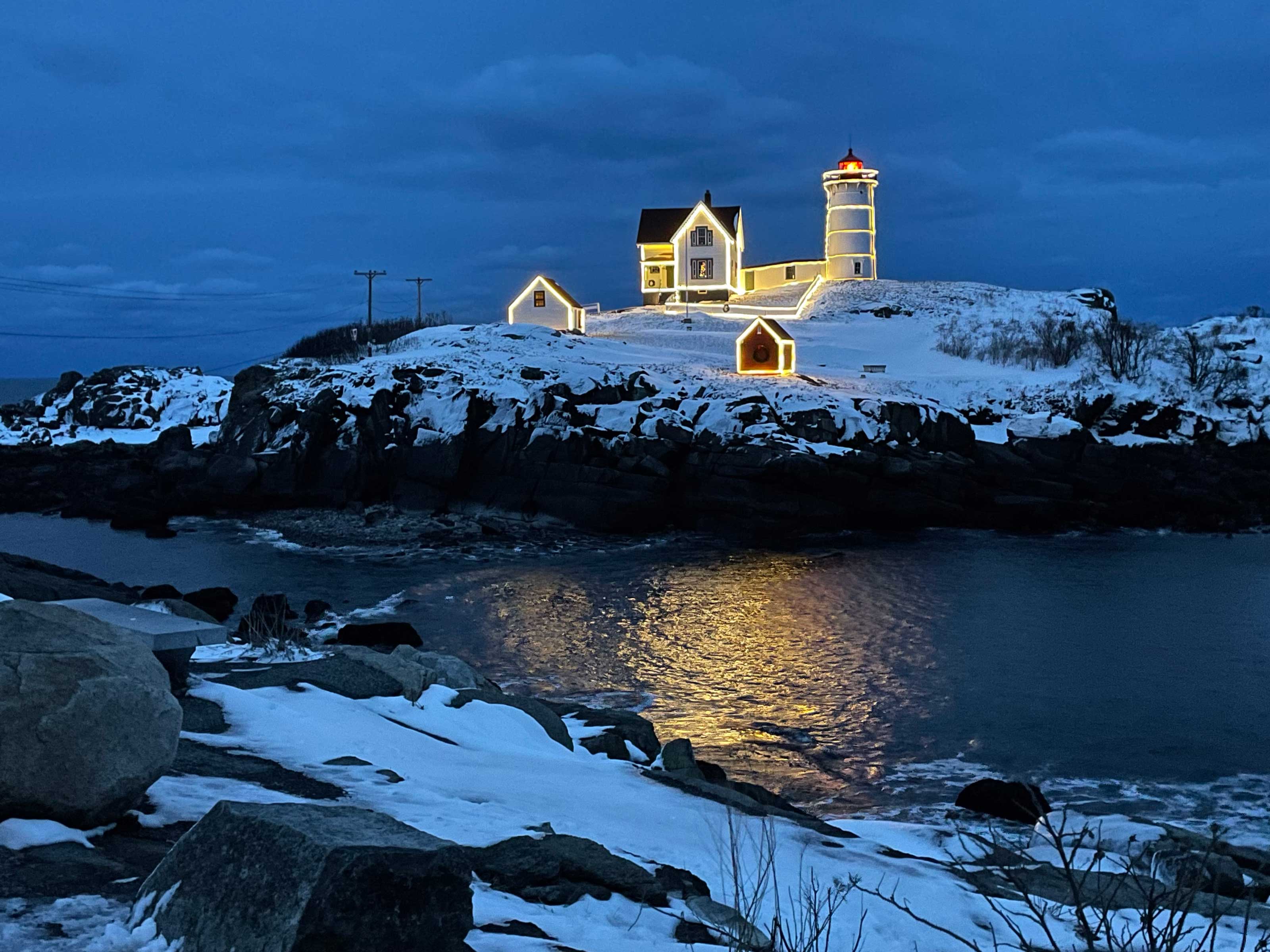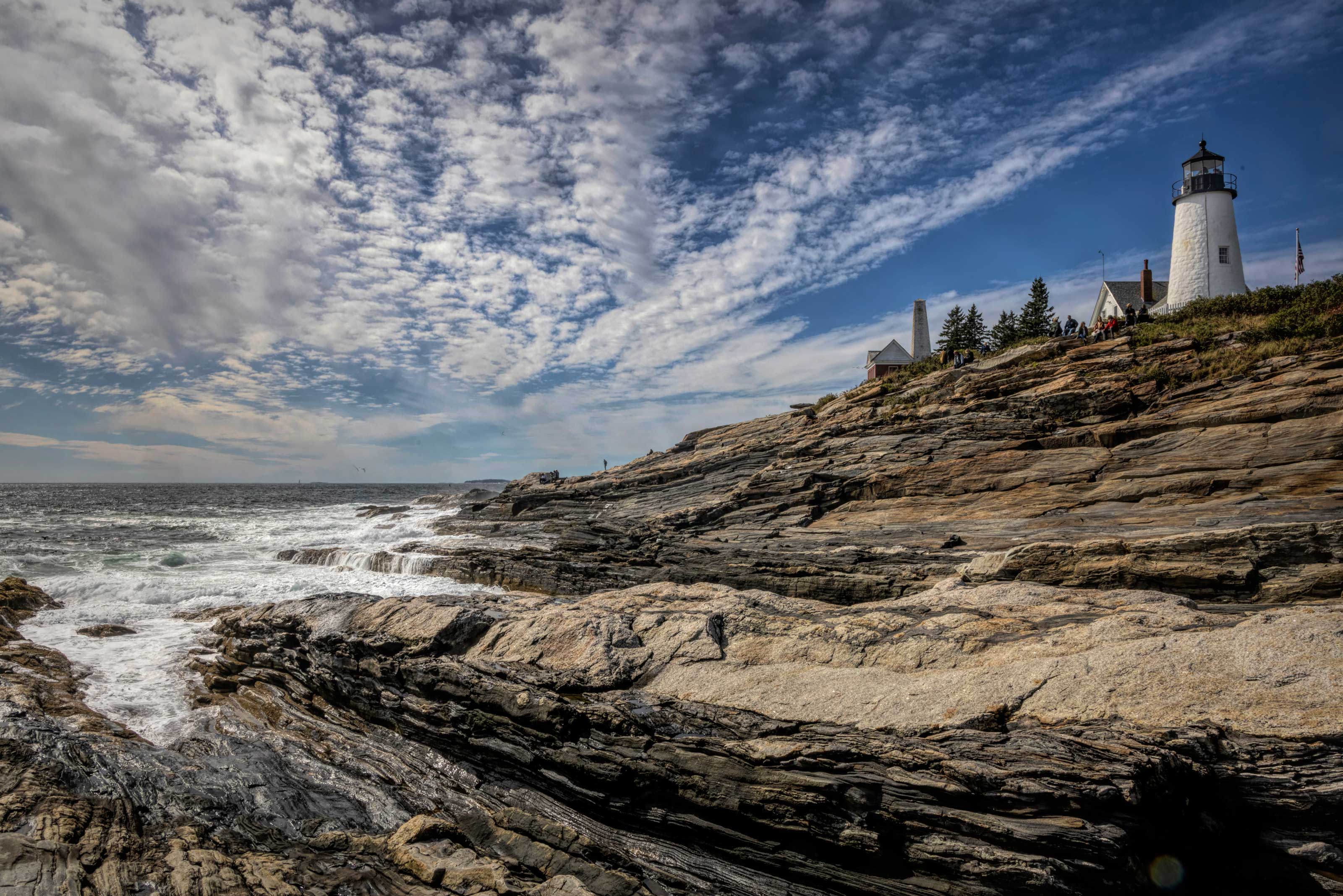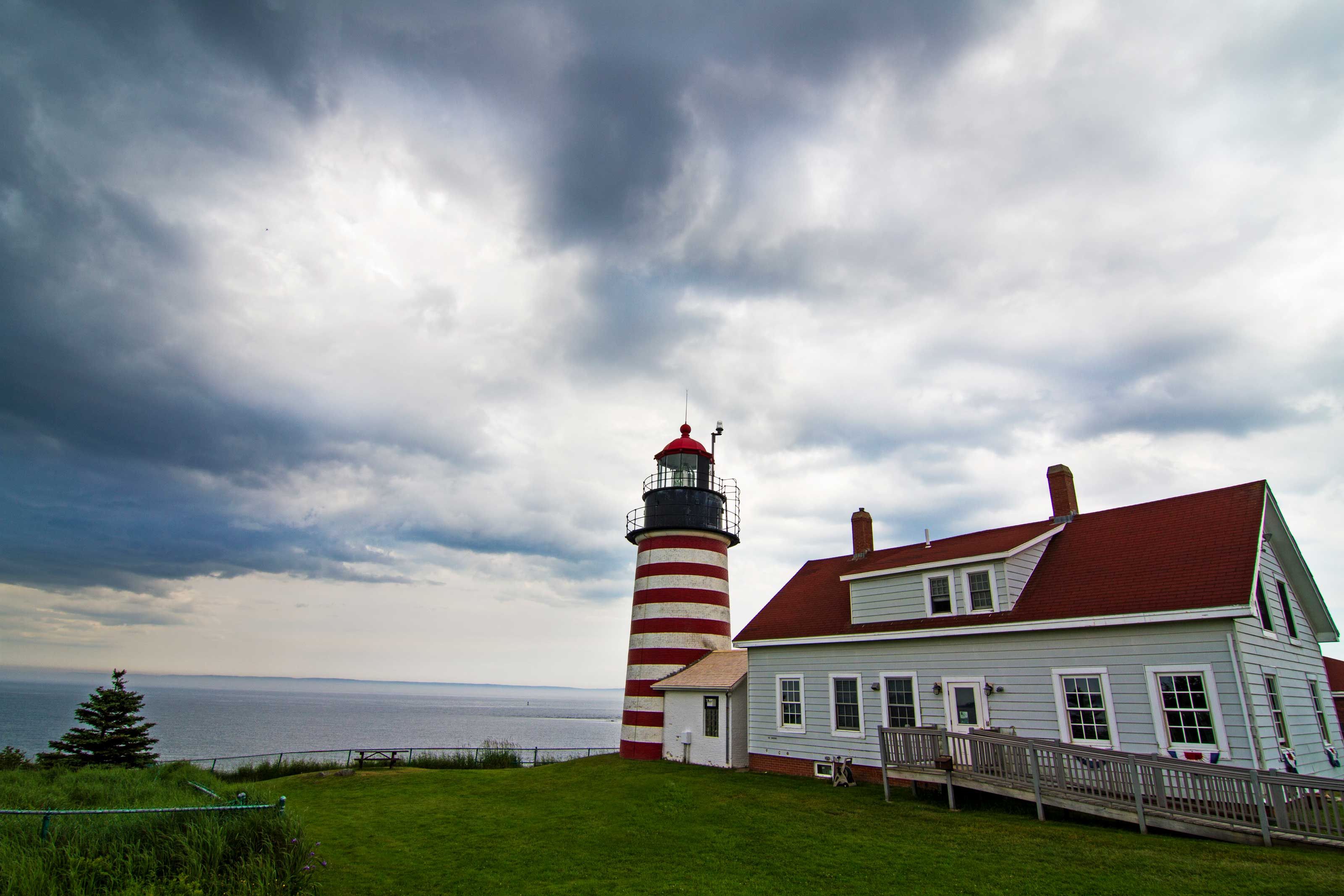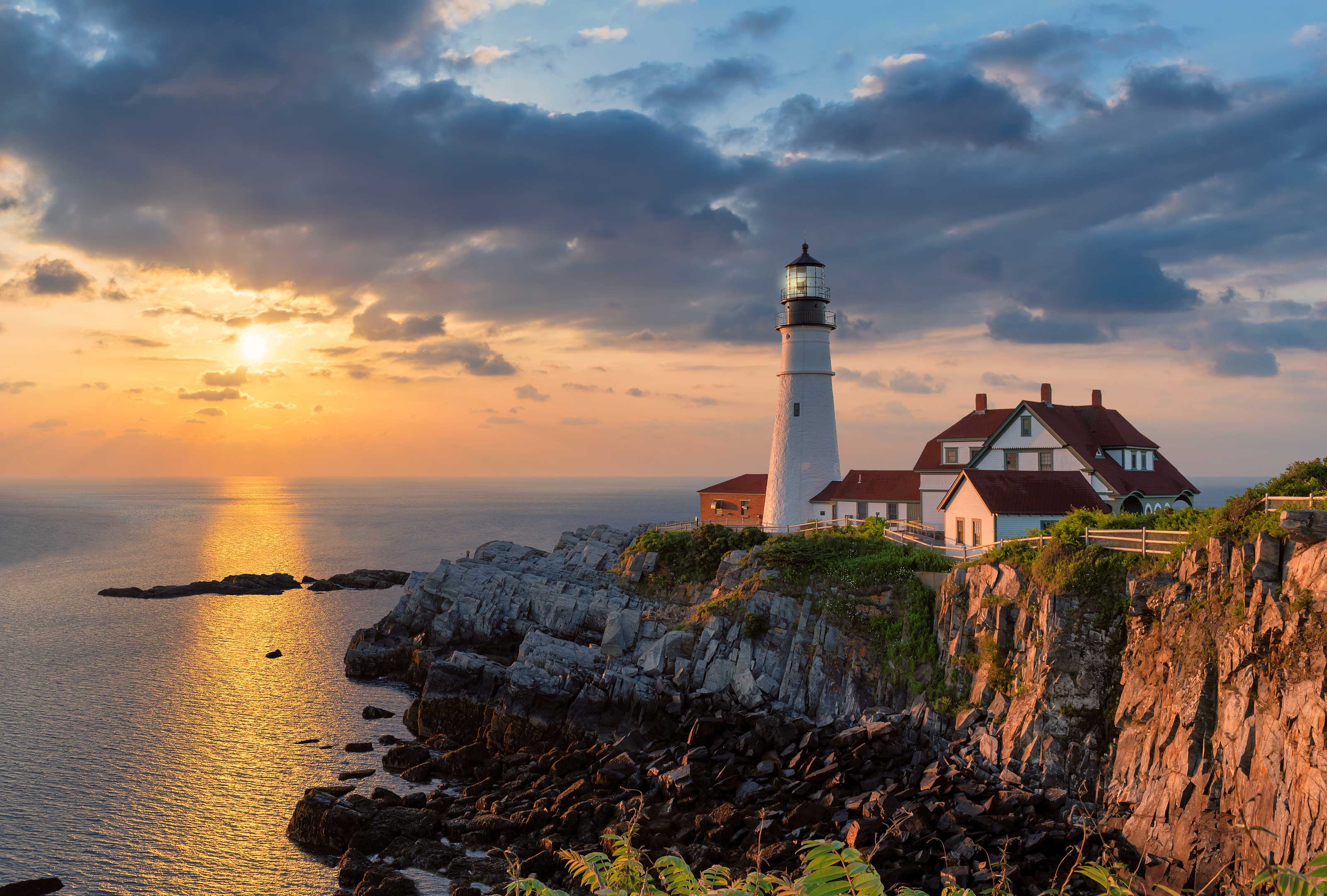

When November rolls in along the Maine coast, the color drains from the sea and sky until only shades of steel and slate remain. The beaches empty, the gulls quiet down, and the lighthouses - those steadfast sentinels, stand-alone again, just as they were meant to.
Summer may belong to the tourists, but winter belongs to the lighthouses.
There’s something about the cold light of late fall that transforms these old towers from postcard attractions into symbols of endurance. They were built for moments like this, when the wind howls, the sea darkens, and all that stands between chaos and safety is a lantern and a keeper’s faith.
You don’t need to brave the icy roads or crashing surf to appreciate them. You can visit them right now, virtually, through photos, webcams, and the collective imagination that Maine has inspired for centuries.
Here are four of Maine’s most iconic lighthouses, and why November might just be when they shine their brightest.
Perched on a rocky cliff in Cape Elizabeth, Portland Head Light is more than Maine’s most photographed lighthouse, it’s one of the most photographed structures in America.
Built in 1791 under the order of George Washington, it remains a working lighthouse today, guarding the entrance to Portland Harbor with a light that reaches 24 nautical miles. In summer, the grounds at Fort Williams Park are filled with visitors and ice cream trucks. In November, though, the place reclaims its solitude.
The sea darkens, the wind picks up, and the white tower stands stark against a pewter sky. Seabirds wheel in the gusts. Waves crash so high they vanish into mist before landing on the rocks.
This is the Portland Head Light that the painters captured - Winslow Homer’s Maine, where beauty and brutality are two sides of the same wave.
From home, you can explore it through live cams and photo galleries on VisitMaine.com, or through the lens of countless photographers who’ve braved the cold dawn to catch the tower bathed in gold.
If Portland Head Light is Maine’s most famous, Pemaquid Point Light might be its most beloved.
Located in Bristol, this lighthouse is printed on the Maine state quarter, a testament to its place in the state’s soul. Built in 1827, it’s known for its dramatic setting atop jagged, striated rocks that tilt down toward the Atlantic like frozen waves.
In November, the landscape feels stripped to its essence: gray stone, white tower, black sea.
Photographers flock here in every season, but the best images come in winter light, when the sun barely clears the horizon, casting long shadows across the rocks and igniting the lantern with an amber glow.
A small museum inside the old keeper’s house tells the story of isolation and resilience, how families once lived here year-round, cut off from the mainland by weather and waves.
Standing there, you realize that these lighthouses weren’t built for beauty - beauty was just the side effect of survival.
Few places in Maine feel as instantly recognizable as Nubble Light, perched on its tiny island off York Beach.
Built in 1879, the lighthouse sits just 100 yards offshore, close enough to photograph clearly, yet far enough to make you wonder how anyone reached it during a storm.
In November, the locals begin stringing Christmas lights across the walkway and tower, a tradition that turns the lonely beacon into a glowing winter postcard. By Thanksgiving weekend, the lights flicker to life, and Nubble becomes a symbol of warmth against the cold.
You can view the scene anytime via the Nubble Lighthouse live webcam, which streams real-time footage of the surf, sky, and seasonal glow.
It’s one of those rare places that proves technology can preserve magic, allowing you to feel the Atlantic wind without ever leaving your chair.
If you’ve ever wanted to stand where the sun first rises in the continental United States, this is it.
West Quoddy Head Light, near Lubec, marks the easternmost point of the country, and in November, the dawn light arrives here before anywhere else in America.
Painted in its distinctive red-and-white candy stripes, the 1808 lighthouse looks almost cheerful against the often-grim backdrop of the Bay of Fundy’s fog and tides. But don’t let the colors fool you, this place is rugged. The wind here can strip the breath from your lungs. And yet, that’s what makes it magnificent.
At sunrise, the horizon burns orange and pink, the waves glow like molten metal, and the lighthouse stands watch as it has for over two centuries. You can’t hear the gulls or smell the salt from a photo, but somehow, Maine’s light manages to cross the screen anyway.
It’s easy to think of lighthouses as relics, symbols of a bygone era. But in Maine, they’re still part of the living coastline.
Many are automated now, but their purpose hasn’t changed: to guide, to warn, to endure. Each flash pattern, known as its “signature” is unique, allowing sailors to identify where they are by sight alone. In fog, the horns still sound, echoing through the bays and islands like ghost voices from another century.
Beyond function, though, these towers represent something deeper. They embody the Maine spirit: stoic, weathered, self-reliant. They don’t compete for attention. They simply do their job, year after year, storm after storm. And that’s what makes them timeless.
You don’t need to brave Route 1 in winter to experience Maine’s coastal magic. You can explore it right from your living room:
Maine Office of Tourism Lighthouse Directory - interactive map with history and photos of all 65 active lights.
Live Cams: Portland Head Light, Nubble Light, and Marshall Point Light all have streaming webcams.
Acadia Magic and LighthouseFriends.com - both offer detailed background, keeper stories, and archival photography.
YouTube drone footage of Pemaquid and Nubble in winter light captures the drama perfectly.
These resources make it easy to research, write about, and even illustrate Maine’s lighthouses without ever setting foot in the snow.
Every lighthouse has two sides, the practical and the poetic.
Practically, they save lives. Poetically, they stand for endurance, faith, and clarity in dark times. It’s no wonder writers from Henry Wadsworth Longfellow to Annie Dillard have used them as symbols of the human condition.
“The rocky ledge runs far into the sea,
And on its outer point, some miles away,
The lighthouse lifts its massive masonry,
A pillar of fire by night, of cloud by day.”
That’s what these places still are - pillars of fire and cloud, shining for anyone willing to look up.
By the time winter arrives in earnest, the Maine coast will be buried in snow, the sea frozen at the edges, and the lighthouses glazed in ice.
That’s what makes Maine’s lighthouses different, they don’t close for the season. They don’t pack up or hibernate. They keep watch, quietly, faithfully, reminding us that even in the darkest months, there’s still something steady to steer by.
Ultimately, whether you’re scrolling through photos, watching a webcam, or planning next summer’s trip, take a moment this November to appreciate the light that never goes out, the one that still guides sailors home, and dreamers, too.





